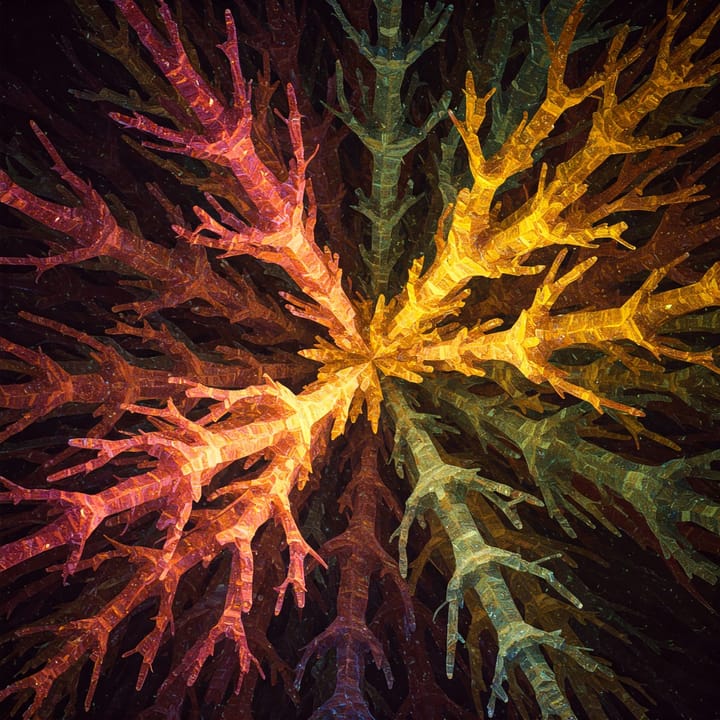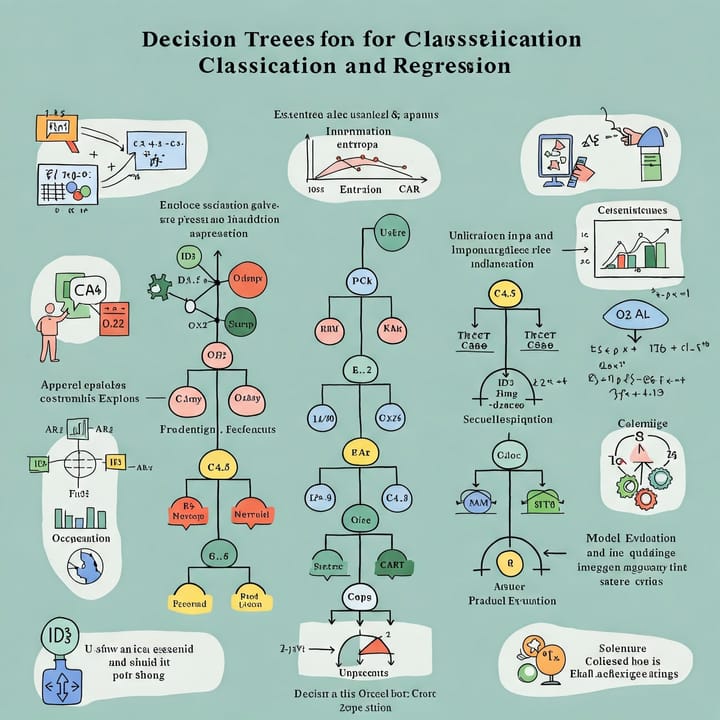Supervised, Unsupervised, and Reinforcement Learning: Understand the Differences and Key Applications
Machine learning (ML) is a powerful field that enables computers to learn from data without explicit programming. Within ML, there are three fundamental learning paradigms: supervised learning, unsupervised learning, and reinforcement learning. Understanding the distinctions between these approaches is crucial for choosing the right technique for a given problem and building effective AI systems. This article provides a comprehensive overview of each paradigm, highlighting their differences, key algorithms, and practical applications.
1. Supervised Learning: Learning with Labeled Data
What it is: Supervised learning is the most common type of machine learning. In this approach, the algorithm is trained on a labeled dataset. A labeled dataset contains input data (features) paired with the correct output (labels or targets). The algorithm learns a mapping function from the inputs to the outputs, aiming to predict the output for new, unseen input data. Think of it like a student learning from a teacher who provides examples with correct answers.
Key Concepts:
- Labeled Data: The cornerstone of supervised learning. Each data point has both input features (e.g., email text, image pixels) and a corresponding label (e.g., "spam" or "not spam," "cat" or "dog").
- Training Data: The dataset used to train the model.
- Validation Data: A separate dataset used to tune the model's hyperparameters and prevent overfitting.
- Test Data: A final dataset used to evaluate the model's performance on unseen data.
- Overfitting: When a model learns the training data too well, including noise and irrelevant details, leading to poor performance on new data.
- Underfitting: When a model is too simple to capture the underlying patterns in the data, resulting in poor performance on both training and new data.
Types of Supervised Learning Problems:
- Classification: The goal is to predict a categorical output (a label from a finite set of classes).
- Examples:
- Spam detection (spam/not spam)
- Image classification (cat/dog/bird)
- Customer churn prediction (churn/no churn)
- Medical diagnosis (disease present/absent)
- Examples:
- Regression: The goal is to predict a continuous output (a numerical value).
- Examples:
- Predicting house prices
- Forecasting stock prices
- Estimating sales revenue
- Predicting a patient's length of stay in a hospital
- Examples:
Key Algorithms:
- Linear Regression: (Regression) Fits a linear equation to the data.
- Logistic Regression: (Classification) Predicts probabilities of belonging to different classes.
- Support Vector Machines (SVMs): (Classification and Regression) Finds the optimal hyperplane to separate classes or fit a regression line.
- Decision Trees: (Classification and Regression) Creates a tree-like structure to make decisions based on input features.
- Random Forests: (Classification and Regression) An ensemble method using multiple decision trees.
- Gradient Boosting Machines (GBMs): (Classification and Regression) Another powerful ensemble method (e.g., XGBoost, LightGBM, CatBoost).
- Neural Networks: (Classification and Regression) Can learn complex non-linear relationships.
When to Use Supervised Learning:
- You have a clearly defined problem with labeled data available.
- You want to predict a specific outcome (either categorical or continuous).
- You have enough data to train a robust model.
2. Unsupervised Learning: Discovering Patterns in Unlabeled Data
What it is: Unsupervised learning deals with unlabeled data. There are no correct answers provided. Instead, the algorithm tries to find hidden patterns, structures, or relationships within the data itself. Think of it like a detective trying to find clues and connections in a pile of evidence without knowing the crime.
Key Concepts:
- Unlabeled Data: Data points only have input features; there are no corresponding labels.
- Intrinsic Structure: The algorithm tries to uncover the underlying organization of the data.
- Dimensionality Reduction: Reducing the number of variables while preserving important information.
- Anomaly Detection: Identifying unusual or outlier data points.
Types of Unsupervised Learning Problems:
- Clustering: Grouping similar data points together into clusters.
- Examples:
- Customer segmentation (grouping customers with similar buying behavior)
- Document clustering (grouping similar news articles)
- Image segmentation (grouping similar pixels in an image)
- Examples:
- Dimensionality Reduction: Reducing the number of variables while retaining essential information.
- Examples:
- Feature extraction (creating new, more informative features)
- Data visualization (representing high-dimensional data in 2D or 3D)
- Noise reduction
- Examples:
- Association Rule Mining: Discovering relationships between items in a dataset.
- Examples:
- Market basket analysis (finding products frequently purchased together)
- Recommendation systems
- Examples:
- Anomaly Detection: Identifying data points that are significantly different from the norm.
- Examples:
- Fraud detection
- Intrusion detection in network security.
- Identifying manufacturing defects.
Key Algorithms:
- K-Means Clustering: Partitions data into k clusters.
- Hierarchical Clustering: Builds a hierarchy of clusters.
- DBSCAN (Density-Based Spatial Clustering of Applications with Noise): Clusters based on data density.
- Principal Component Analysis (PCA): (Dimensionality Reduction) Finds the principal components that capture the most variance in the data.
- t-distributed Stochastic Neighbor Embedding (t-SNE): (Dimensionality Reduction) Useful for visualizing high-dimensional data.
- Apriori Algorithm: (Association Rule Mining) Finds frequent itemsets.
- Autoencoders: (Dimensionality Reduction, Anomaly Detection) A type of neural network.
- Isolation Forest: (Anomaly Detection) Isolates anomalies by randomly partitioning the data.
- One-Class SVM: (Anomaly Detection) Learns a boundary around the normal data points.
When to Use Unsupervised Learning:
- You have unlabeled data and want to explore its structure.
- You want to find hidden patterns or groupings.
- You need to reduce the dimensionality of your data.
- You want to identify outliers or anomalies.
3. Reinforcement Learning: Learning Through Interaction
What it is: Reinforcement learning (RL) is different from both supervised and unsupervised learning. In RL, an agent learns to make decisions by interacting with an environment. The agent receives rewards or penalties based on its actions, and its goal is to learn a policy that maximizes its cumulative reward over time. Think of it like training a dog with treats: the dog (agent) learns to perform actions (tricks) that lead to rewards (treats).
Key Concepts:
- Agent: The learner and decision-maker.
- Environment: The world the agent interacts with.
- State: The current situation of the agent in the environment.
- Action: A choice made by the agent.
- Reward: A numerical feedback signal from the environment.
- Policy: A mapping from states to actions (the agent's strategy).
- Value Function: An estimate of the expected cumulative reward from a given state.
- Exploration vs. Exploitation: The tradeoff between trying new actions (exploration) and sticking with actions known to yield rewards (exploitation).
Types of Reinforcement Learning Problems:
- Game Playing: Training agents to play games (e.g., chess, Go, video games).
- Robotics: Controlling robots to perform tasks (e.g., walking, grasping, navigation).
- Resource Management: Optimizing resource allocation (e.g., energy consumption, traffic flow).
- Personalized Recommendations: Dynamically adapting recommendations based on user interactions.
- Control systems: Such as autonomous driving.
Key Algorithms:
- Q-Learning: Learns a Q-function that estimates the value of taking a particular action in a given state.
- SARSA (State-Action-Reward-State-Action): An on-policy algorithm that updates the Q-function based on the actual action taken.
- Deep Q-Networks (DQN): Uses a neural network to approximate the Q-function.
- Policy Gradients: Directly optimize the policy without explicitly learning a value function. (e.g., REINFORCE, A2C, A3C, PPO, TRPO).
- Actor-Critic Methods: Combine value function estimation and policy optimization.
When to Use Reinforcement Learning:
- You have a problem that can be framed as a sequential decision-making process.
- You can define a reward signal that reflects the desired behavior.
- You can simulate the environment or interact with a real environment.
- There is no existing labeled dataset, and the agent must learn through trial and error.
Comparison Table:
| Feature | Supervised Learning | Unsupervised Learning | Reinforcement Learning |
|---|---|---|---|
| Data | Labeled (input-output pairs) | Unlabeled (input only) | No predefined data; generated through interaction |
| Goal | Predict output for new input | Discover patterns/structure in data | Learn optimal policy to maximize reward |
| Feedback | Direct feedback (correct answer) | No direct feedback | Reward/penalty signal from environment |
| Examples | Classification, Regression | Clustering, Dimensionality Reduction | Game playing, Robotics, Control systems |
| Key Algorithms | Linear Regression, SVM, Decision Trees | K-Means, PCA, DBSCAN | Q-Learning, DQN, Policy Gradients |
Conclusion:
Supervised, unsupervised, and reinforcement learning are the three major paradigms of machine learning. Each approach has its strengths and weaknesses and is suited to different types of problems. By understanding their differences and key applications, you can choose the right tool for your machine learning task and build effective AI systems. The field of machine learning is constantly evolving, with new algorithms and techniques being developed all the time, so continuous learning is essential to stay at the forefront of this exciting field.
Some links to check:



Comments ()